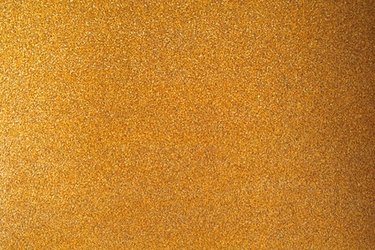Things You'll Need
Dish soap
Coarse sponge
Rags
Towels
220-grit sandpaper
Tack cloth
Heavy-duty fabric drop cloth
Acrylic latex primer
2- to 4-inch latex paintbrush
Tempera paint
Paint sealer

Also, referred to as poster color, tempera paint is a permanent, quick-drying coating, consisting of pigment and a glutinous binding agent, like egg yolk. When Tempera peels from plastic, the culprit is almost always improper surface preparation. Because plastic is nonporous, it is ill-suited for any type of paint adhesion. Plastic surfaces should be abraded with sandpaper to provide a tooth for the tempera to adhere to. Properly conditioned plastic will maintain its tempera finish. However, for extra durability, you may want to apply a paint sealer.
Step 1
Clean the plastic surface with dish soap using a coarse sponge. Rinse the soap from the plastic with wet rags. Dry the plastic with towels.
Video of the Day
Step 2
Stimulate surface adhesion by abrading the plastic with 220-grit sandpaper. Scour the surface until it feels gritty.
Step 3
Wipe down the abraded plastic with a sticky tack cloth.
Step 4
Place a fabric drop cloth beneath the plastic.
Step 5
Coat the abraded plastic with an acrylic latex primer, using a 2- to 4-inch paintbrush, manufactured specifically for use with water-based latex paints. Wait two hours for the primed plastic to dry.
Step 6
Wash the brush with water.
Step 7
Coat the primed plastic with tempera paint using the cleaned paintbrush. Wait four hours for the finished plastic to dry.
Tip
If the tempera-coated plastic is located outdoors, apply a coat of protective paint sealer, using the latex paintbrush, to provide extra durability in varying weather conditions.
Warning
Never apply primer over non-abraded plastic, or the finish will peel.
Do not apply tempura paint over unprimed plastic, or it will eventually flake off.
Video of the Day